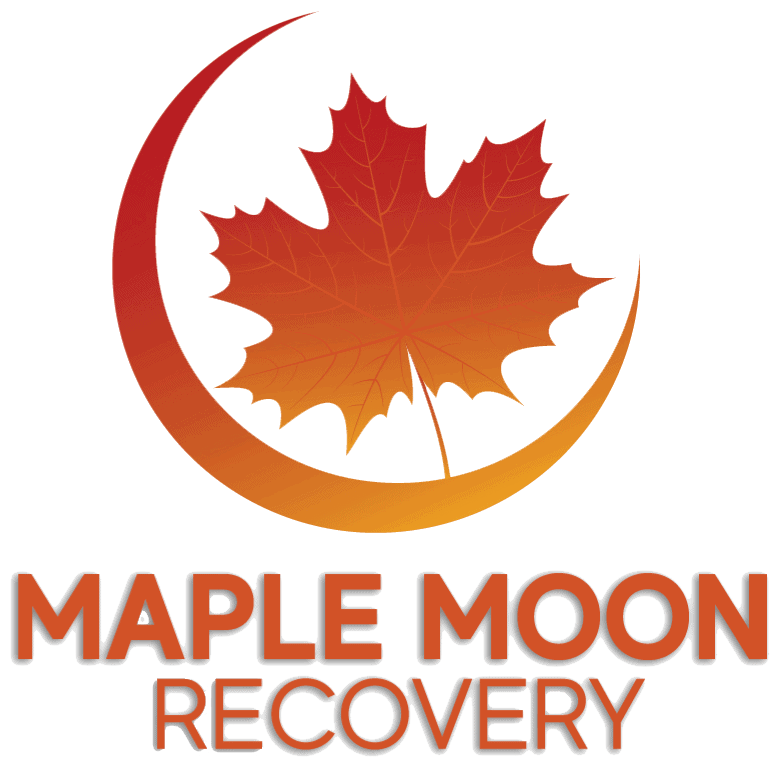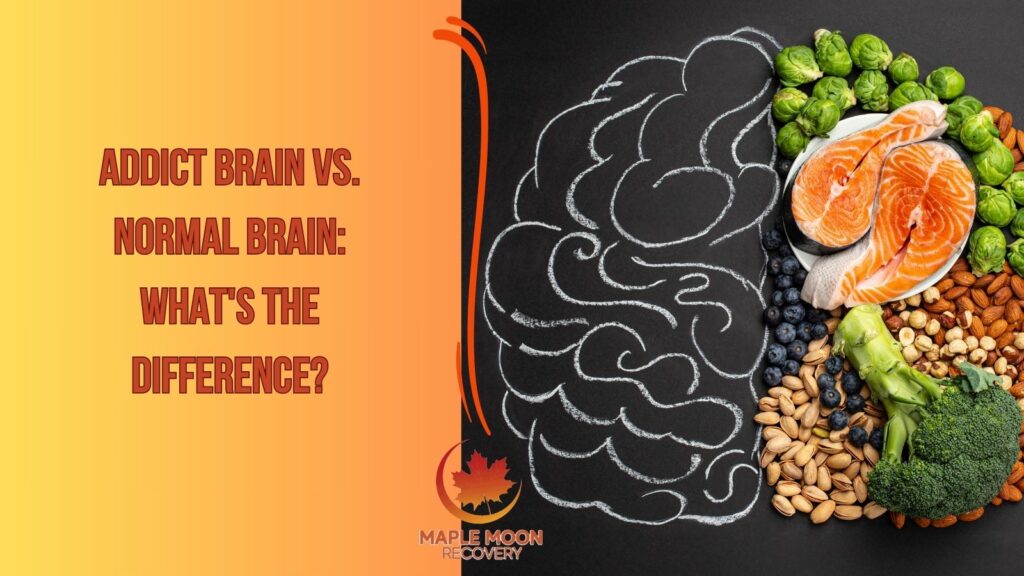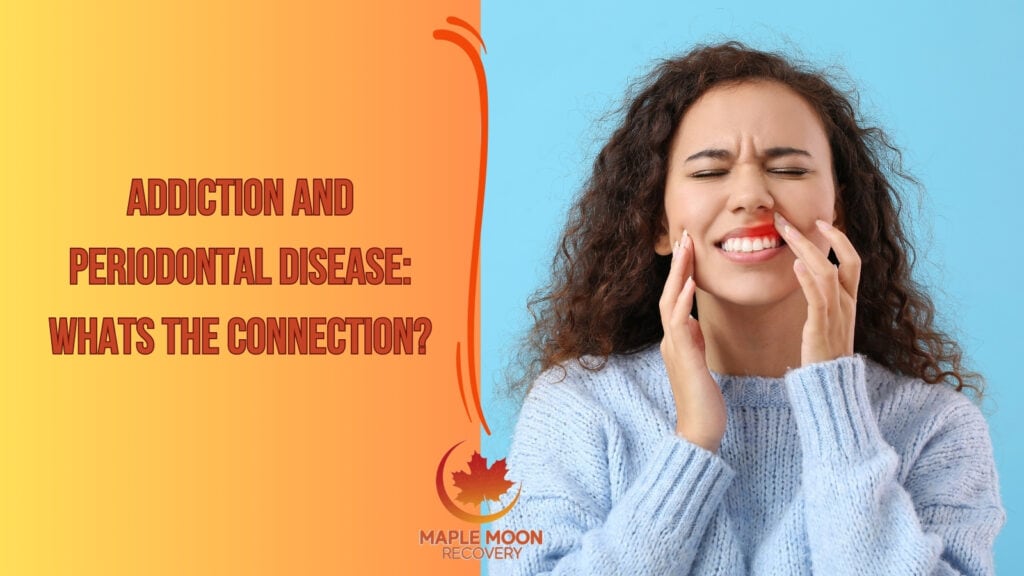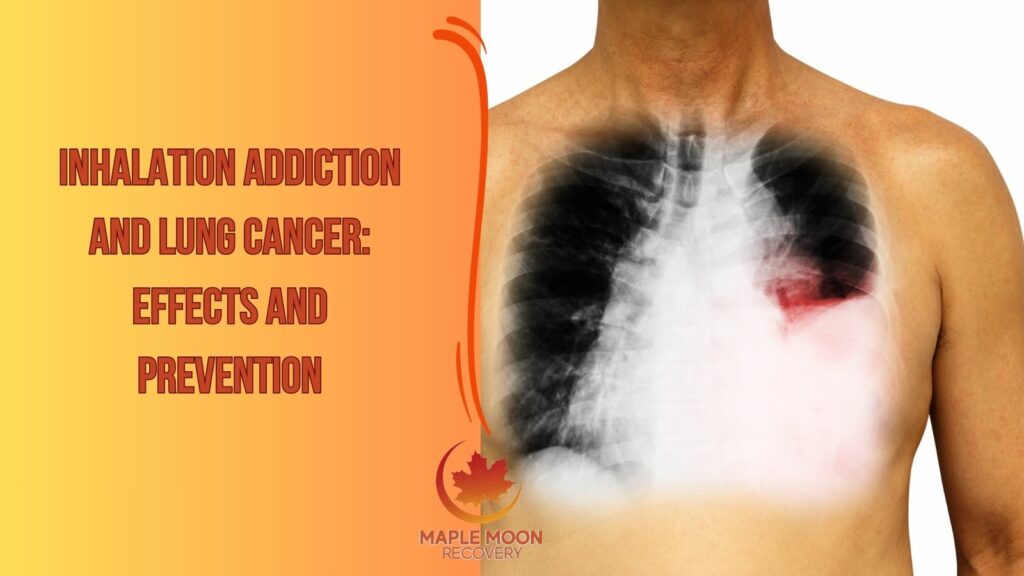The difference between an addict’s brain and a normal brain lies in how addiction affects the brain’s functioning and structure.
The human brain is a complex organ responsible for regulating various bodily functions, emotions, and behaviors.
Addiction is a persistent brain condition that involves the brain’s reward, motivation, and memory mechanisms. It’s marked by strong desires for substances or activities, driving individuals to engage in compulsive and persistent pursuit of these stimuli, even when aware of the potential negative outcomes.
Neuroscience notes the differences between the brains of individuals struggling with addiction and those of non-addicted individuals. By examining the neurological underpinnings of addiction, we gain insights into how the addict’s brain differs from the normal brain.
How Does Addiction Start Manifesting in the Normal Brain?
Addiction manifests in the brain through complex interactions among neurotransmitters, neural circuits, and brain regions involved in reward, motivation, learning, and memory. Here’s how it typically begins to exhibit:
- Initial Exposure: The process often begins with the initial exposure to a substance or behavior that triggers the brain’s reward system. This involves the consumption of drugs, such as alcohol or opioids, or engagement in activities like gambling or gaming.
- Reward Pathway Activation: Upon exposure, the substance or behavior activates the brain’s reward pathway, primarily involving the release of dopamine, a neurotransmitter associated with pleasure and reinforcement. This activation creates a pleasurable sensation, reinforcing the desire to repeat the behavior.
- Reinforcement Learning: Through a process called reinforcement learning, the brain associates the substance or behavior with pleasure and reward. This strengthens the neural connections associated with the behavior, making it more likely to be repeated in the future.
- Neuroadaptation: With repeated exposure, the brain undergoes neuroadaptation, adjusting its functioning in response to the continued presence of the substance or behavior. This leads to tolerance, where higher doses of the substance or more intense engagement in the behavior are needed to achieve the same level of reward.
- Desensitization and Craving: Over time, the brain becomes desensitized to the substance or behavior, leading to reduced sensitivity to natural rewards and an increased craving for the addictive substance or behavior. This craving drives compulsive seeking and consumption despite adverse consequences.
- Altered Brain Circuitry: Prolonged exposure to addictive substances or behaviors creates substantial changes in brain circuitry, including alterations in neurotransmitter systems, neural pathways, and brain regions involved in decision-making, impulse control, and emotional regulation.
- Loss of Control: As addiction progresses, individuals experience a loss of control over their substance use or behavior. This loss of control is driven by changes in the brain that impair decision-making abilities, increase impulsivity, and weaken inhibitory control.
- Compulsive Behavior: The culmination of these changes is the development of compulsive drug-seeking or behavioral patterns, where the individual feels driven to engage in the addictive behavior despite negative consequences, such as health problems, relationship issues, or legal troubles.
What’s the Difference Between a Normal and Addict’s Brain?
The following are the main differences:
Neurobiology of Addiction:
- Addiction involves alterations in the brain’s reward system, which plays a central role in reinforcing behaviors essential for survival, such as eating and social interaction. The brain’s reward circuitry, primarily mediated by neurotransmitters such as dopamine, undergoes profound changes in individuals with addiction. Chronic substance use or compulsive behaviors hijack this system, leading to heightened cravings and diminished sensitivity to natural rewards.
Reward Pathway Dysfunction:
- In the normal brain, the reward pathway responds to pleasurable stimuli by releasing dopamine, a neurotransmitter associated with feelings of pleasure and reward. However, in the addict’s brain, this system becomes dysregulated. Prolonged substance use or engagement in addictive behaviors leads to desensitization of dopamine receptors, requiring higher doses of the substance or behavior to achieve the same level of reward. This phenomenon, known as tolerance, is a hallmark of addiction.
Impaired Decision-Making and Self-Control:
- Another key difference between the addicted brain and the normal brain lies in the areas responsible for decision-making and self-control. In individuals with addiction, regions of the prefrontal cortex, which govern executive functions such as impulse control and decision-making, exhibit structural and functional abnormalities. This impairment in cognitive control contributes to the compulsive nature of addictive behaviors, as individuals struggle to resist cravings and prioritize long-term goals over immediate gratification.
Emotional Dysregulation:
- The addict’s brain also demonstrates alterations in emotional processing and regulation. Chronic substance use or behavioral addiction disrupts the brain’s stress response system, leading to heightened reactivity to stressors and difficulties in managing emotions. This dysregulation contributes to the cycle of addiction, as individuals use substances or engage in behaviors to alleviate negative emotions or stress.
Neuroplasticity and Learning:
- Neuroplasticity, the brain’s ability to adapt and change in response to experiences, plays a major role in addiction. In the addicted brain, repeated exposure to addictive substances or behaviors leads to neuroadaptations, altering the structure and function of neural circuits involved in reward processing and decision-making. These changes reinforce addictive patterns and make it challenging to break free from the cycle of addiction.
Genetic and Environmental Influences:
- Both genetic predisposition and environmental factors contribute to the development of addiction. Certain genetic variations increase susceptibility to addiction by influencing neurotransmitter function, stress response, and reward processing. Additionally, environmental factors such as exposure to trauma, peer influence, and access to addictive substances or behaviors shape addiction risk.
Neurobiology of Withdrawal and Craving:
- Withdrawal symptoms and cravings are common features of addiction, reflecting underlying neurobiological changes in the brain. During withdrawal, individuals experience physical and psychological symptoms as the brain adjusts to the absence of the addictive substance or behavior. Cravings, on the other hand, arise from conditioned responses to cues associated with substance use or addictive behaviors, triggering activation of the brain’s reward pathways.
The table notes several elements that show the differences between a normal brain and an addict’s brain:
| Aspect | Addict’s Brain | Normal Brain |
| Reward System | Dysregulated, hypersensitive to substances/behaviors | Balanced, it responds appropriately to natural rewards |
| Dopamine Production | Excessive dopamine release | Normal dopamine release |
| Craving Intensity | Intense cravings for substances/behaviors | Occasional cravings for natural rewards |
| Decision-Making | Impaired judgment and decision-making | Sound judgment and rational decision-making |
| Memory Function | Altered memory processing | Normal memory function |
| Impulse Control | Lack of impulse control | Effective impulse control |
| Motivation | Driven primarily by substance/behavior cravings | Motivated by diverse factors such as goals and interests |
| Emotional Regulation | Difficulty regulating emotions | Effective emotional regulation |
| Neuroplasticity | Reduced neuroplasticity | Healthy neuroplasticity |
| Stress Response | Heightened stress response | Balanced stress response |
| Attention and Focus | Difficulty maintaining attention | Able to maintain attention |
| Risk Assessment | Poor risk assessment | Sound risk assessment |
| Learning Ability | Impaired learning capacity | Normal learning ability |
| Social Functioning | Disrupted social interactions | Healthy social interactions |
| Coping Mechanisms | Reliance on substances/behaviors for coping | Utilization of healthy coping mechanisms |
| Neural Circuitry | Altered neural circuitry | Well-functioning neural circuitry |
| Craving Triggers | Triggers often related to environmental cues | Triggers typically related to natural needs or desires |
| Mental Health | Increased likelihood of co-occurring mental health issues | Lower likelihood of co-occurring mental health issues |
| Treatment Response | Requires specialized addiction treatment | Responsive to conventional treatments or interventions |
| Recovery Process | Challenging and requires ongoing support | More straightforward with a tendency towards improvement |
The disparity between an addict’s brain and a normal brain is profound, extending across various neurobiological, psychological, and behavioral domains.
Intervention involves developing effective prevention and treatment strategies tailored to address the unique neurobiological vulnerabilities of individuals with addiction. In targeting specific neurobiological mechanisms underlying addiction, these therapies restore balance to the brain and promote lasting recovery.
Does addiction increase the likelihood of experiencing co-occurring mental health issues?
Yes, individuals with addiction have a higher likelihood of experiencing co-occurring mental health issues such as anxiety, depression, and mood disorders, which complicate the treatment process.
What Are the Long-Term Effects of Inhalation Addiction on the Brain and Body?
Inhalation addiction, such as smoking, can have detrimental effects on both the brain and body, including increased risk of lung cancer, respiratory diseases, and cardiovascular problems. Chronic inhalation of addictive substances like nicotine can also affect brain function, leading to addiction-related changes in neural pathways and neurotransmitter systems. While lung cancer primarily affects the respiratory system, addiction impacts various aspects of brain function, behavior, and overall health. Prevention strategies for inhalation addiction involve smoking cessation programs, education on the risks of smoking, and promoting healthy lifestyle choices.
How does addiction influence an individual’s risk assessment abilities?
Addiction impairs an individual’s ability to assess risks accurately, leading to engaging in high-risk behaviors and making poor decisions that exacerbate the cycle of addiction.




